Revolutionizing Patient-Centered Medical Services through Telehealth
The advent of telehealth has revolutionized access to primary care, enabling providers to deliver personalized treatment plans remotely. Leveraging digital platforms and mobile technology, healthcare organizations now offer comprehensive virtual services that cater to diverse patient needs, improve convenience, and enhance health outcomes. This article explores how telehealth facilitates personalized primary care, examines its features, benefits, differences from traditional care, scope of conditions managed, and the overarching advantages that make it a transformative approach in modern healthcare.
Features and Benefits of Virtual Primary Care Services
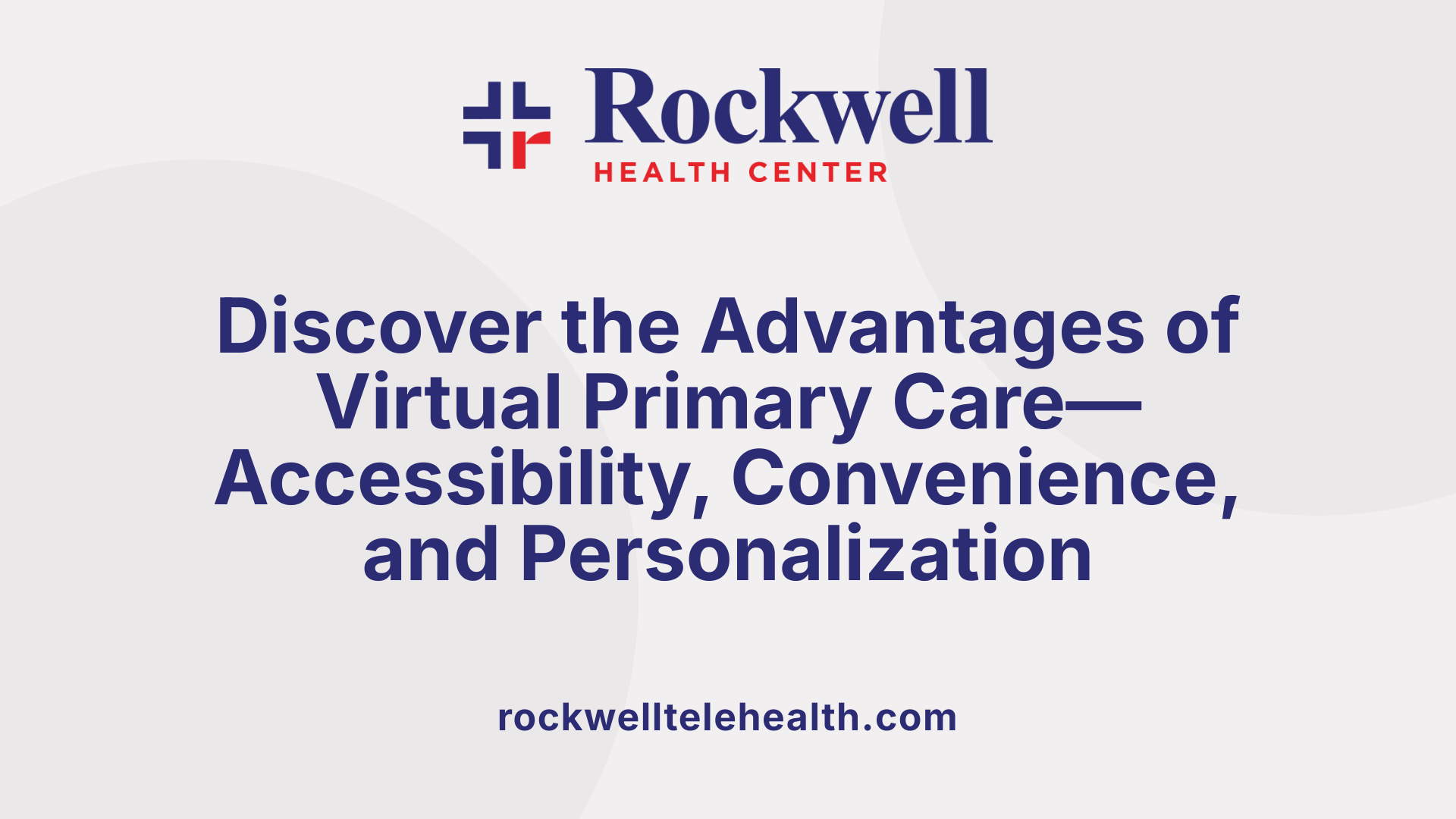
What features and benefits do virtual primary care services offer?
Virtual primary care services provide a comprehensive way for patients to connect with healthcare providers using digital platforms such as video calls, phone conversations, and secure messaging. This approach allows for face-to-face interactions without the need for in-person visits, making healthcare more accessible and flexible.
One of the main advantages is increased accessibility for individuals in rural areas, those who are homebound, or have mobility challenges. Patients can schedule regular health checkups, ongoing management of chronic conditions, mental health support, and preventive services without traveling to a medical facility.
Convenience is a significant benefit, as virtual visits can be scheduled easily and often at short notice. Reduced travel time and waiting room time contribute to a more efficient healthcare experience. Moreover, these services support medication management and remote monitoring of health conditions, facilitating early detection of health issues and timely intervention.
Virtual primary care emphasizes building stronger, personalized relationships between patients and providers. Through continuous digital communication, healthcare providers can better understand individual needs, tailor treatment plans, and deliver continuous, relationship-centered care.
Overall, virtual primary care enhances safety, efficiency, and patient engagement, ensuring healthcare is delivered in a way that fits modern lifestyles while maintaining comprehensive, personalized support for managing health.
Differences Between Traditional and Telehealth-Delivered Primary Care

What are the differences between traditional primary care and telehealth-delivered primary care?
Traditional primary care involves in-person visits where healthcare providers can perform physical examinations, diagnostic tests, and treatments directly. These visits are essential for acute issues, complex diagnoses, and initial assessments that require hands-on procedures.
Telehealth, on the other hand, offers remote consultations using digital platforms such as video calls, phone, or messaging. This method provides greater convenience and accessibility, especially for routine checkups, mental health support, and ongoing management of chronic conditions. Virtual visits reduce the need for travel and can be scheduled more flexibly, making healthcare more accessible for patients with mobility challenges or those living in remote areas.
However, telehealth has some limitations. It cannot replace in-person physical examinations or urgent emergency interventions. For complex cases requiring immediate diagnostics or procedures, traditional care remains necessary.
Many healthcare providers now use a combination of both approaches—hybrid models—that leverage the convenience of virtual visits for regular monitoring and the thoroughness of traditional visits for detailed diagnostics or urgent needs. This integrated approach ensures comprehensive, personalized care that adapts to different medical situations and patient preferences.
In summary, while traditional care provides direct, hands-on assessment, telehealth enhances access and convenience, making healthcare more adaptable and patient-friendly.
Providing Personalized Primary Care Remotely Through Telehealth
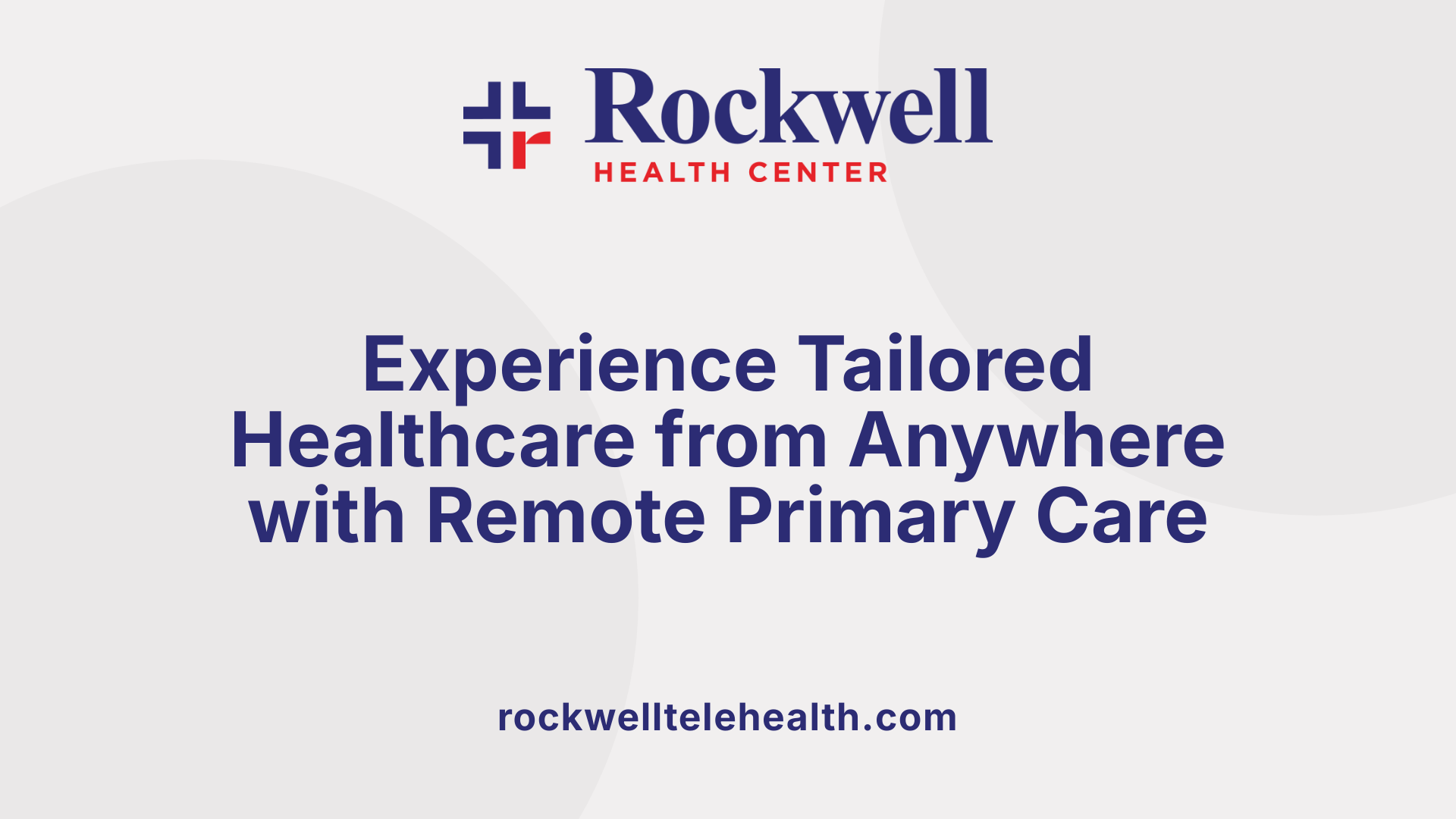
How is personalized primary care provided remotely through telehealth?
Personalized primary care delivered via telehealth involves remote consultations where healthcare providers assess patient symptoms, review medical histories, and create individualized treatment plans. These virtual assessments occur through secure video or audio calls, making healthcare accessible from anywhere.
Advanced technologies play a vital role. Remote monitoring devices can track vital signs continuously, transmitting data directly to providers. Patient portals offer a secure space for messaging, managing appointments, and accessing health records, fostering ongoing communication.
Telehealth platforms such as Amazon One Medical, Doctor On Demand, and Amwell are improving how care is delivered. They enable easy scheduling, secure messaging, and follow-up support, creating a seamless experience for patients.
This approach enhances care continuity by keeping health providers connected with patients beyond in-person visits. It is especially beneficial for individuals in remote locations, those with mobility issues, or busy schedules, significantly reducing appointment wait times.
Real-time health data sharing and digital tools allow providers to monitor conditions continually and adjust treatments as needed. These innovations help in tailoring healthcare, ensuring each patient receives personalized attention adapted to their specific needs.
In short, telehealth leverages modern communication and digital health tools to enable ongoing, customized primary care remotely, leading to better health outcomes and patient satisfaction.
Scope of Conditions Managed via Telehealth Primary Care
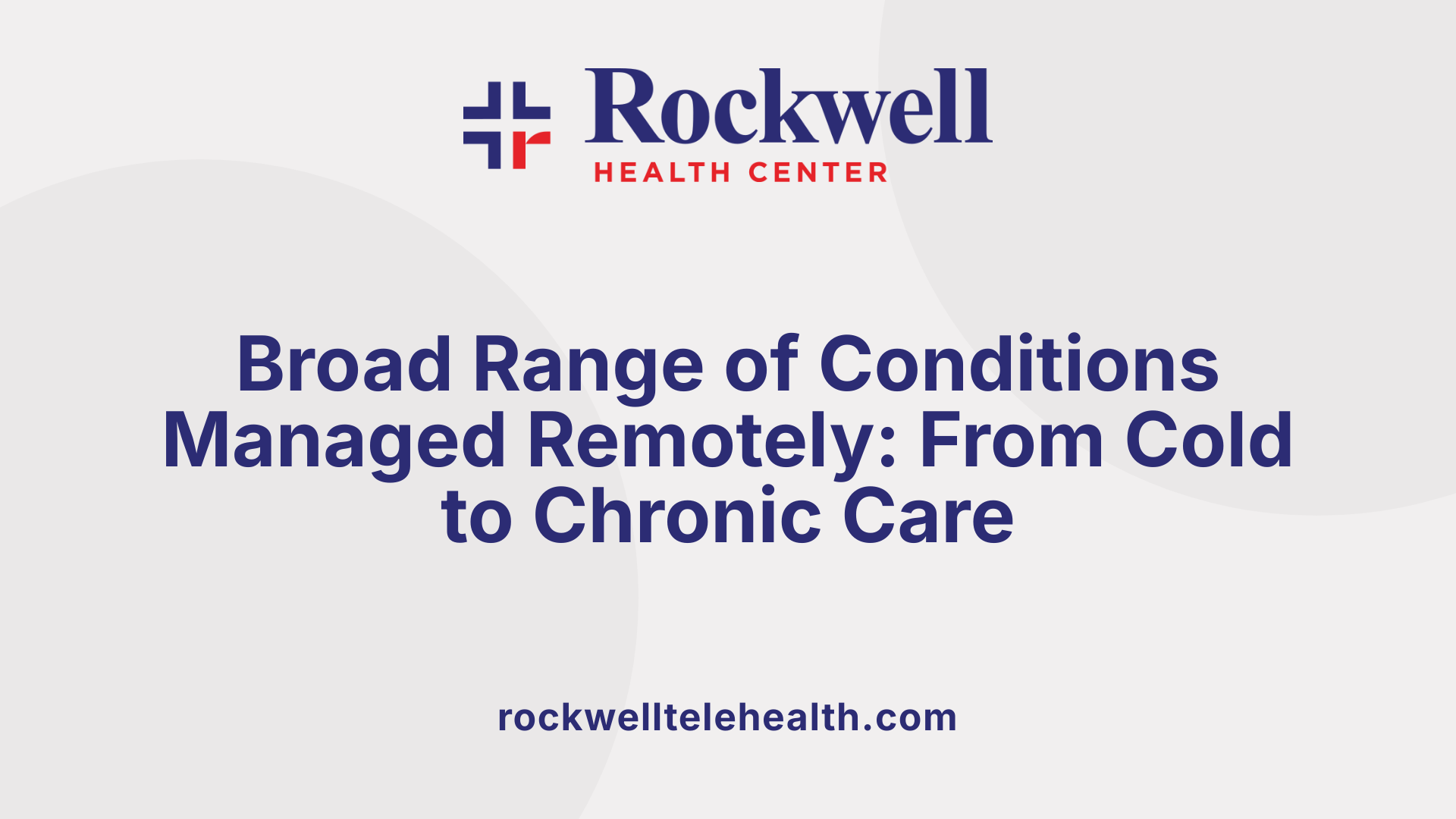
What types of conditions and treatments can be managed through telehealth-based primary care?
Telehealth primary care offers a versatile approach to managing a broad range of health concerns from the comfort of home or any location with internet access.
Common illnesses such as colds, coughs, sore throats, the flu, and earaches can be diagnosed and treated through virtual visits. This enables timely care without the need for in-person office visits, especially during inconvenient hours.
Patients with chronic conditions like diabetes and hypertension benefit from remote monitoring and regular virtual check-ins. These tools allow providers to track vital signs and other health data regularly, supporting ongoing management and adjustment of treatment plans.
Mental health issues—including anxiety, depression, and stress-related conditions—are increasingly managed through virtual therapy sessions and psychiatric consultations. This approach makes mental health support more accessible and less stigmatizing.
Furthermore, telehealth is suitable for addressing skin conditions, minor injuries, allergies, and respiratory problems. Providers can offer diagnosis, prescribe medications, and recommend follow-up care through secure video calls.
While telehealth enhances access to routine and minor health concerns, it does have limitations. Emergency or complex cases that require detailed physical examinations or specialized procedures still necessitate in-person visits.
Integrating remote monitoring devices improves disease management over time, especially for long-term health needs, reducing hospital visits and enhancing quality of life.
| Conditions Managed | Treatments Offered | Notes |
|---|---|---|
| Common colds, flu, earaches | Diagnosis, prescriptions, advice | Quick diagnosis, often same-day care |
| Diabetes, hypertension | Monitoring, medication adjustments | Continuous support, enhanced disease control |
| Anxiety, depression | Counseling, medication management | Often combined with other behavioral health services |
| Skin conditions, minor injuries | Diagnosis, treatment plans, prescriptions | Teledermatology for quick assessment and treatment |
| Allergies, respiratory issues | Medications, management plans | Support for chronic allergy management |
Overall, telehealth primary care broadens access to essential health services, promoting convenience and efficiency. It allows timely intervention for many conditions, improving patient outcomes while reducing unnecessary visits to healthcare facilities.
Advantages of Delivering Primary Care via Telehealth Technologies
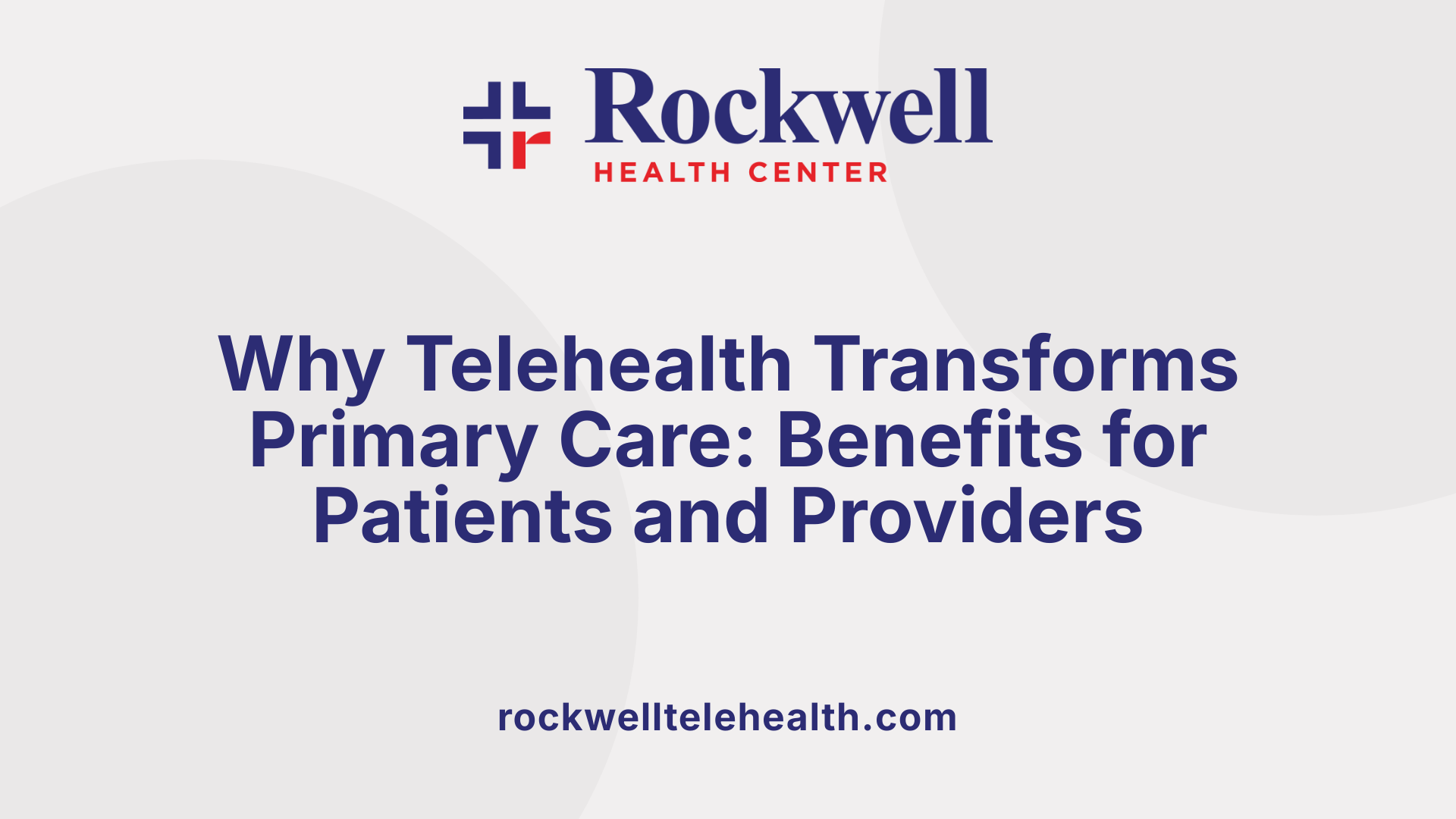 Delivering primary care through telehealth technologies has transformed the healthcare landscape by providing numerous benefits to both patients and providers.
Delivering primary care through telehealth technologies has transformed the healthcare landscape by providing numerous benefits to both patients and providers.
One significant advantage is enhanced accessibility, especially for patients in rural, underserved areas, or those with mobility issues. Telehealth removes geographical barriers, enabling individuals to consult with healthcare providers without the need for travel, which often reduces delays in receiving necessary care.
The convenience of virtual visits from home or work is another major benefit. Patients can schedule and attend appointments via video or phone calls, saving time and reducing the inconvenience associated with traditional in-office visits. This flexibility encourages more regular checkups, ongoing management of chronic conditions, and timely attention to health concerns.
Continuity of care is improved through proactive management of ongoing health issues. Telehealth makes it easier to track chronic diseases like diabetes or hypertension, supporting regular monitoring and early intervention, which can improve health outcomes.
Infection control and safety are critical considerations, especially during infectious disease outbreaks like COVID-19. Virtual visits reduce physical contact, helping to prevent the spread of illnesses while still allowing access to professional healthcare guidance.
Moreover, telehealth enhances healthcare system efficiency, leading to increased patient satisfaction and potential cost savings. By avoiding unnecessary emergency room visits and hospitalizations, telehealth reduces healthcare expenditure and eases the burden on emergency services.
Integration with labs, pharmacies, and remote monitoring tools adds to the effectiveness of telehealth. Patients can have lab tests ordered and results shared seamlessly, prescriptions sent directly to pharmacies, and tools used to monitor health metrics remotely, enabling a comprehensive, personalized approach to care.
| Benefits | Description | Impact |
|---|---|---|
| Improved Access | Reaches rural, underserved, and mobility-impaired populations | Reduces health disparities |
| Convenience | Virtual visits from anywhere, anytime | Encourages regular checkups, better engagement |
| Chronic Disease Care | Continuous monitoring and management | Promotes early intervention and better outcomes |
| Infection Control | Minimizes physical contact during health crises | Ensures safety while maintaining care continuity |
| Cost Efficiency | Fewer emergency visits and hospital admissions | Reduces overall healthcare costs |
| Integrated Support | Lab tests, prescriptions, remote monitoring for comprehensive care | Personalized and effective treatment plans |
Overall, telehealth is revolutionizing primary care delivery by making healthcare more accessible, efficient, and safe, and by integrating multiple aspects of patient health management into a seamless digital experience.
Specialized Virtual Care Offerings and Platforms
What are the different models of virtual care provided by leading platforms?
Several platforms offer innovative approaches to virtual healthcare, integrating primary care, specialty services, and comprehensive digital health tools.
Amazon One Medical provides both membership-based and pay-per-visit options. Members enjoy benefits like 24/7 on-demand virtual care, appointment booking, messaging with providers, and prescription management. The pay-per-visit model offers quick treatment for common conditions without a membership commitment, making access flexible. These options include virtual care for children aged 2-11, combining telehealth with in-person visits for ongoing health needs.
Doctor On Demand features licensed clinicians for virtual primary care, mental health, and specialty care. Its services include routine checkups, chronic disease management, mental health support, and urgent care. The platform emphasizes high-quality, HIPAA-compliant video calls, with integrated medical records and care coordination, ensuring personalized and continuous care.
Lyric focuses on personalized, 24/7 acute and specialty care through virtual platforms. Its network includes seasoned physicians, dermatologists, and mental health experts. Lyric offers care navigation, virtual musculoskeletal care, labs, and weight loss programs, all delivered through a virtual-first approach that combines remote consultations with labs and pharmacy services.
Amwell stands out with a comprehensive digital platform offering virtual primary care, behavioral health, and automated programs. With over 80 million covered lives, Amwell collaborates extensively with health systems, integrating care, and enabling seamless provider engagement. They deliver automated care and follow-up programs, improving patient transitions and health outcomes.
What features do these platforms offer to make virtual care effective?
All four platforms emphasize features that enhance continuity and quality of care. They include:
| Feature | Service Description | Benefits |
|---|---|---|
| Medical record integration | All platforms incorporate digital health records to ensure secure, seamless data sharing. | Helps providers access complete patient histories, improving accuracy and personalization. |
| Care collaboration | Platforms coordinate with specialists when needed, ensuring comprehensive treatment. | Enhances outcomes through multidisciplinary input. |
| Provider networks | Access to licensed, experienced healthcare professionals tailored to patient needs. | Ensures high-quality care and a wide range of specialty services. |
| Telemonitoring | Use of remote monitoring tools, especially in chronic disease management. | Supports early detection and timely intervention. |
| Telehealth for ongoing care | Continuous primary, behavioral, and specialty care via scheduled and on-demand visits. | Promotes personalized, relationship-based healthcare. |
How is telehealth used for ongoing, personalized care and telemonitoring?
These platforms leverage virtual visits not just for immediate concerns but also for long-term health management. They facilitate regular checkups, follow-ups, and behavioral health therapy, fostering closer patient-provider relationships.
Remote monitoring tools are integrated into care plans, especially for chronic conditions like diabetes and hypertension. These tools transmit real-time health data to providers, allowing early detection of issues and timely adjustments to treatment.
The combination of telehealth, electronic health records, and remote monitoring enables a truly personalized approach. Patients benefit from tailored health plans, proactive disease management, and continuous health support, resulting in safer and more effective healthcare experiences.
Conclusion: The Future of Primary Care in a Digital Age
How is telehealth becoming a seamless part of healthcare systems?
The integration of telehealth into mainstream healthcare is accelerating rapidly. Major insurance providers like UnitedHealthcare, Aetna, Cigna, and platforms such as Amwell and Doctor On Demand are expanding their virtual care offerings. These services encompass a wide range of healthcare needs—from urgent care and mental health support to chronic disease management and preventive screenings.
Many of these systems are investing in technology that makes virtual healthcare more accessible and user-friendly. For instance, apps and websites allow patients to schedule and conduct virtual visits easily, and platforms are increasingly combining telehealth with in-person care when necessary.
All 50 states now benefit from widespread virtual care services, highlighting how telehealth is becoming a default option available nationwide. The continuous evolution of digital tools ensures healthcare providers can deliver more personalized, efficient, and connected care experiences.
What are the benefits of hybrid care models?
Hybrid care—combining virtual visits with traditional in-person appointments—is transforming patient experiences. It offers the convenience of on-demand virtual care for minor illnesses, follow-ups, and routine screenings while reserving in-person visits for more complex procedures or physical examinations.
Benefits of this approach include reduced wait times, minimized travel, and lower costs for patients. For example, virtual urgent care visits typically cost less than in-person visits, often around $54 or less, making healthcare more affordable.
Moreover, hybrid models facilitate ongoing management of chronic conditions like diabetes and hypertension. Patients can have regular check-ins via video, making continuous medical oversight more achievable. This flexibility supports better health outcomes and higher satisfaction.
What are ongoing innovations in digital health and remote monitoring?
Innovations are continually improving virtual care capabilities. From secure messaging with providers to integrating labs, pharmacy services, and remote patient monitoring tools, digital health solutions are becoming increasingly sophisticated.
Platforms like Lyric provide 24/7 care navigation, encompassing primary care, mental health, dermatology, and musculoskeletal services, all delivered virtually. They leverage technology to personalize care and provide ongoing support.
New developments include automated care programs that assist with patient transitions post-ED visits, manage medication adherence, and monitor vital signs remotely. These tools not only enhance care quality but also generate measurable clinical and operational improvements.
Artificial intelligence and data analytics are also playing vital roles by identifying health trends, predicting risks, and customizing treatment plans.
Why is delivering primary care through telehealth advantageous?
Delivering primary care through telehealth offers numerous advantages, including improved access to healthcare services for patients in rural or underserved areas, thereby reducing disparities in care. It enhances convenience by allowing patients to consult with providers through video or phone visits from the safety and comfort of their homes.
Telehealth facilitates continuous monitoring and management of chronic conditions, promoting patient engagement and self-management. It supports infection control by minimizing physical contact, which was particularly vital during the COVID-19 pandemic.
Additionally, telehealth can improve healthcare efficiency, increase patient satisfaction, and reduce overall costs by preventing unnecessary emergency visits and hospitalizations.
How might the future of telehealth shape overall healthcare delivery?
The future of telehealth points toward more integrated, patient-centered, and technologically advanced care systems. As digital health tools become more sophisticated, we will see a broader adoption of hybrid models tailored to individual needs.
Remote monitoring, artificial intelligence, and data analytics will continue to enhance personalized care, improve outcomes, and optimize resource use.
This evolution promises to make healthcare more accessible, affordable, and effective—transforming primary care into a more proactive and engaging experience.
| Aspect of Telehealth | Current Developments | Future Trends | Additional Notes |
|---|---|---|---|
| Access & Convenience | Virtual visits in all 50 states, mobile apps | Increased use of AI, chatbots, seamless integration | Improved patient engagement |
| Cost & Efficiency | Lower costs per visit, preventive focus | Value-based models, automation | Reduced hospitalizations |
| Range of Services | Urgent care, mental health, specialty care | Expanded specialty areas, remote monitoring | Personalized, continuous care |
| Technology & Innovation | Secure video calls, labs, prescriptions | AI, remote sensors, patient apps | Better health tracking and outcomes |
This ongoing digital transformation will continue to make primary care more accessible, efficient, and personalized, shaping the future landscape of healthcare delivery.
Embracing the Digital Shift in Patient-Centered Care
Telehealth has emerged as a pivotal tool in delivering personalized primary care, bridging gaps in traditional healthcare systems. Its features, from virtual consultations to remote monitoring, empower patients to manage their health proactively while enabling providers to deliver continuous, tailored treatment plans. The scope of conditions manageable through telehealth is broad, covering everything from minor illnesses to chronic disease management, mental health, and preventive screenings. Its numerous advantages—improved access, convenience, safety, and cost savings—make telehealth an essential component of future healthcare models. As technology advances and integrated platforms evolve, the potential for more sophisticated, patient-centered virtual care continues to grow. Embracing these digital innovations paves the way for a more accessible, efficient, and personalized healthcare system for all.
References
- Virtual care visits for members with health plans through work
- Amazon One Medical | Telehealth & In-Person Visits
- Virtual Primary Care | See an Online ...
- Lyric Health: Integrated Virtual Primary Care | Telehealth ...
- Virtual Care (Telehealth) Services
- Virtual care, wherever you are
- Amwell: Your Partner in Care Delivery
- What can be treated through telehealth?













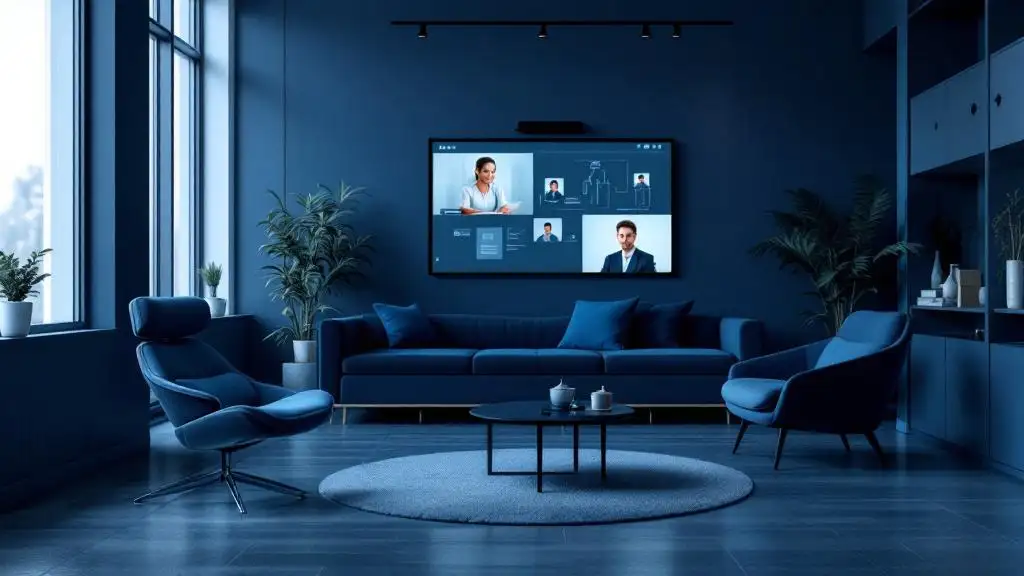






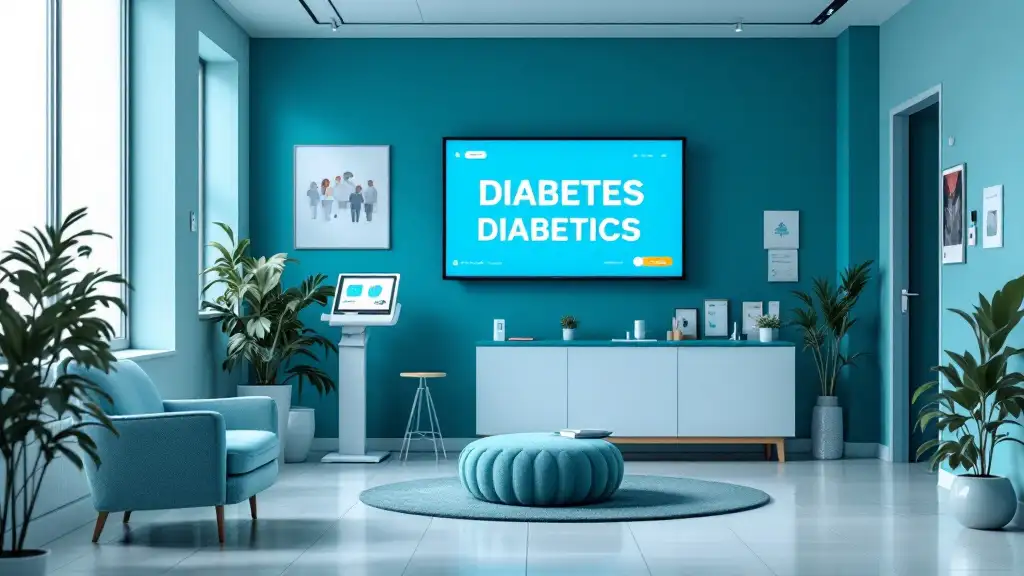
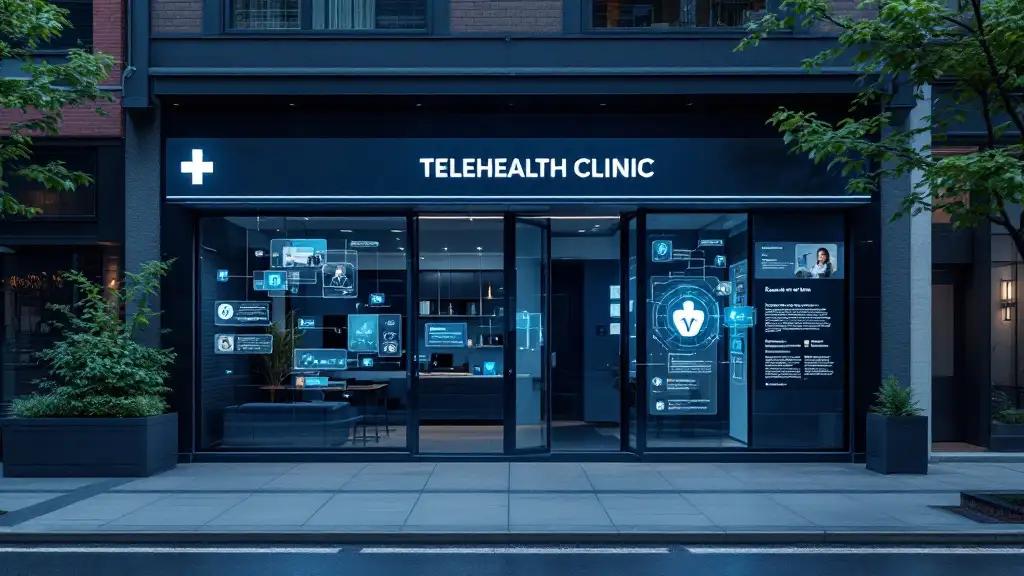












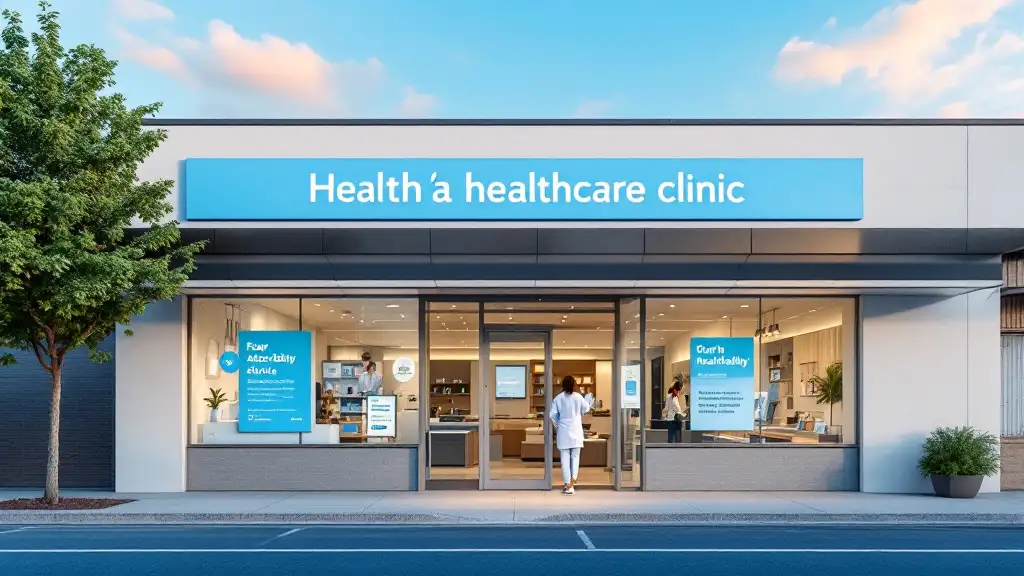











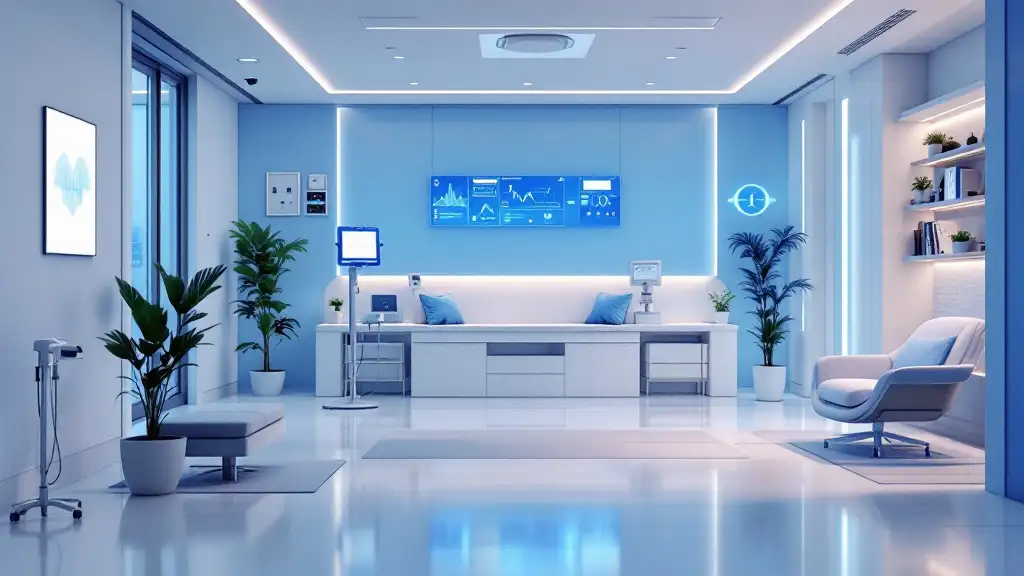







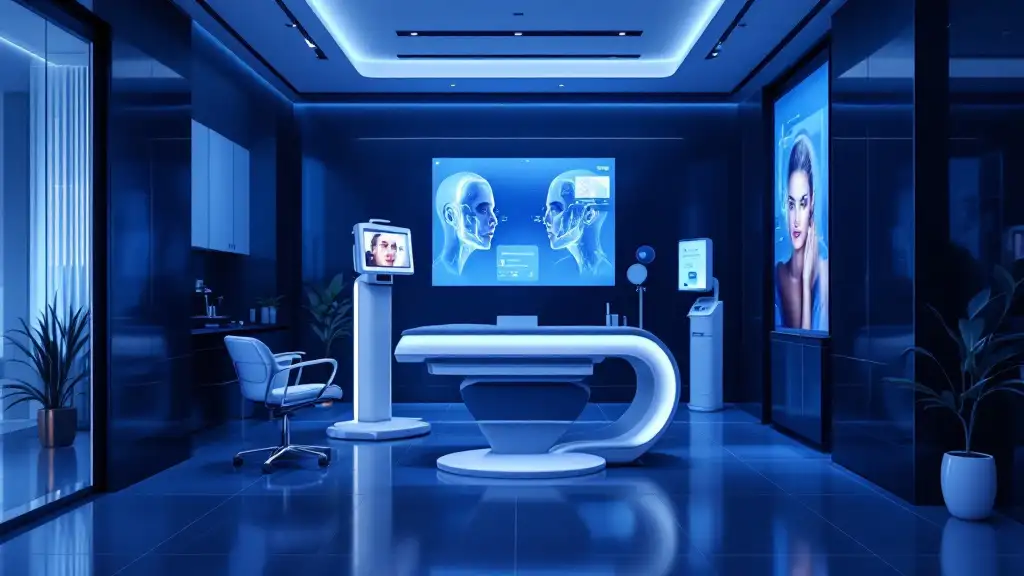














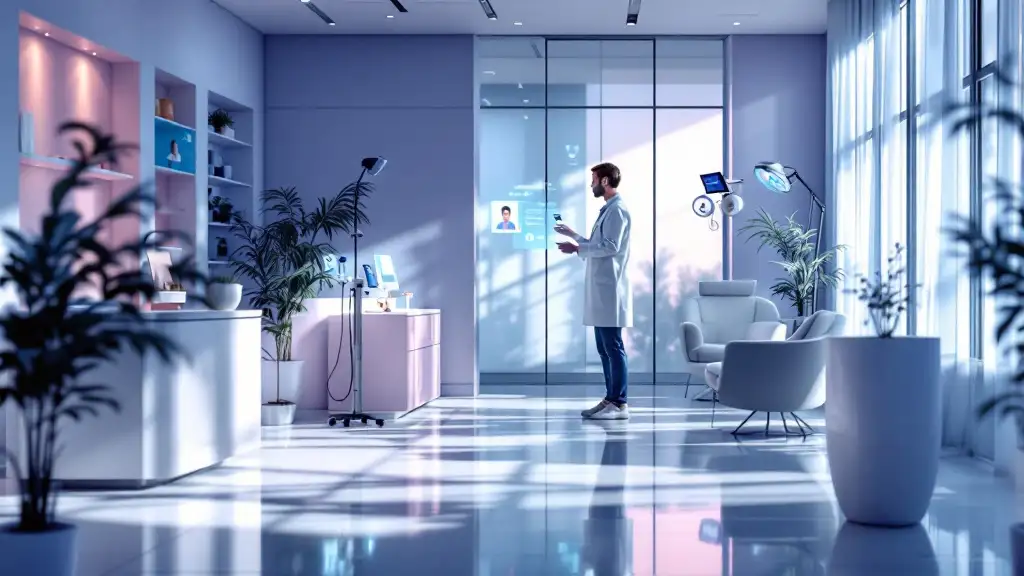


















.png)